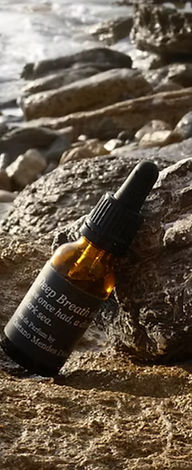This is your Project Page. It's a great opportunity to help visitors understand the context and background of your latest work. Double click on the text box to start editing your content and make sure to add all the relevant details you want to share.
This is your Project Page. It's a great opportunity to help visitors understand the context and background of your latest work. Double click on the text box to start editing your content and make sure to add all the relevant details you want to share.
This is your Project Page. It's a great opportunity to help visitors understand the context and background of your latest work. Double click on the text box to start editing your content and make sure to add all the relevant details you want to share.
Caetano Mendes Dias
Deep Breath– A Journey Through Chemosynthetic Bacteria
For the Roots Exhibition, artist Caetano Mendes Dias presents Deep Breath, an immersive experience in the form of a room mist (spray) that invites us to reconnect with one of the oldest forms of life on Earth—chemosynthetic bacteria. These extraordinary microorganisms, which live in the extreme conditions of hydrothermal vents, thrive in environments where few other forms of life can survive. They endure temperatures up to 150°C and pressures reaching 250 atmospheres, using sulfur compounds produced by geological activity as their primary energy source, rather than relying on sunlight.
The Vital Role of Chemosynthetic Bacteria
Chemosynthetic bacteria form the foundation of the deep-sea food chain, supporting diverse organisms like tubeworms, clams, and shrimp through unique symbiotic relationships. Tubeworms, which can grow over 2 meters in length, harbor billions of sulfur-oxidizing bacteria in their tissues. These bacteria assist the tubeworms in absorbing carbon nutrients, while the tubeworms provide the bacteria with essential elements for survival. This mutual exchange highlights the intricate, life-sustaining networks that exist in the deep ocean, where sulfur-reducing and sulfur-oxidizing bacteria live in harmony, contributing to the biogeochemical cycle of sulfur.
Our Shared Ancestry with Chemosynthetic Bacteria
Deep Breath invites the viewer to consider our shared ancestry with these bacteria. Around 4 billion years ago, in the depths of the ocean, chemosynthetic bacteria were among the first forms of life to emerge. These ancient microorganisms evolved complex chemosensors that allowed them to detect sulfur compounds in the water, a mechanism that sustained the vibrant ecosystems of the hydrothermal vents. Over time, these chemosensors evolved, eventually forming the olfactory systems found in higher organisms, including humans. Today, we rely on our sense of smell, a direct descendant of those primordial sensors, to perceive the world around us.
A Reflection on Life’s Evolution
Through this installation, Caetano Mendes Dias encourages us to reflect on the deep, interconnected history of life on Earth. The mist, infused with the essence of these primordial bacteria, is more than just a sensory experience—it’s a reminder of our ancient roots and the importance of chemosensation in the evolution of life. The ability to detect and respond to chemical signals in our environment has shaped our development, from the early days of life in the deep sea to the present moment, where we continue to rely on our olfactory system to navigate the world. As you breathe in the mist, remember that the very ability to smell, to perceive molecules in the air, has deep roots in our shared history with these tiny, resilient bacteria.






